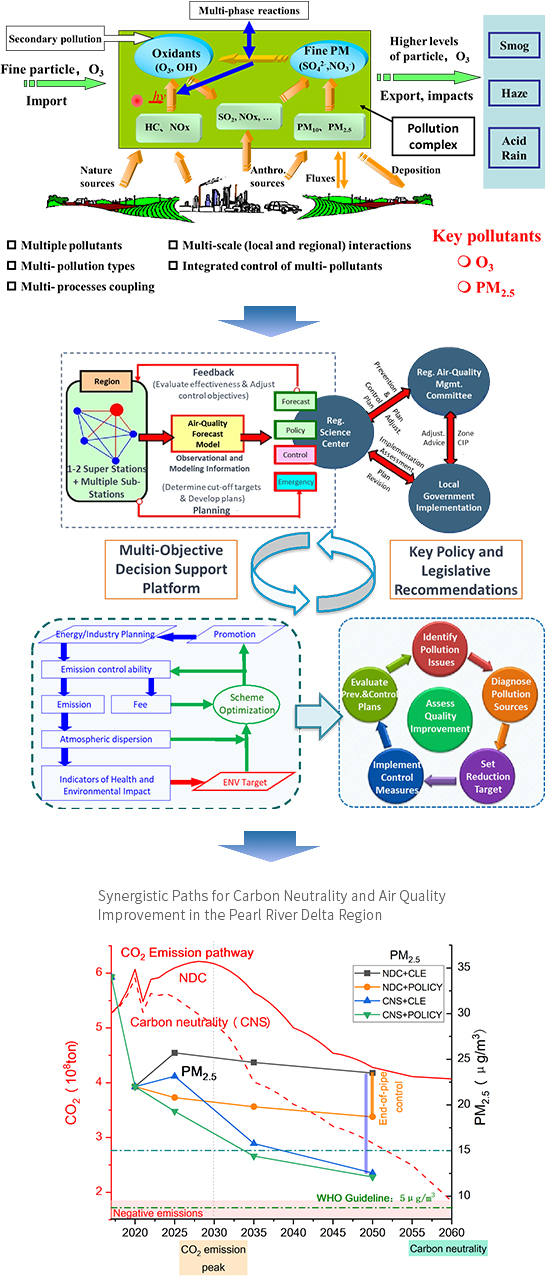Achievements
Air pollution prevention and control theorem and technical framework centered on atmospheric oxidation capacity regulation, supporting key regions to explore collaborative reduction of pollution and carbon emissions
1
New light has been shed on the core indicator of atmospheric oxidation capacity, OH radical, by revealing a non-traditional formation mechanism that is globally ubiquitous. This finding improves the quantification of the global atmospheric self-cleaning capacity and enriches the atmospheric chemistry theory, with the OH radical cycle at its core (Science, 2009; Nature GeoScience, 2012).
2
The contribution mechanisms of agricultural activities and international trade to global air pollution have been revealed. For the first time, the impact of pollution transfer on global climate forcing, air quality, and public health have been quantified (Science, 2021; Nature GeoScience, 2022).
3
A theoretical framework for the prevention and control of air pollution complex, which centers around atmospheric oxidative regulation and prioritizes multi-pollutant collaborative control, has been proposed for the first time in China. Together with a “regional vision and urban action” strategy , this framework was successfully deployed in the Pearl River Delta region and contributed to its attainment of PM2.5. (awarded the Second Prize of National Science and Technology Progress Award).
4
An Integrated Energy-Environment-Economy Assessment Model (IMED), an innovative tool for analyzing the cost-benefit and path optimization of policies aimed at pollution reduction and carbon reduction, has been developed. It is one of the representative models for climate and environmental policy research in China, through which we pin-down multi-objective collaborative paths for carbon emissions reduction and air quality improvement in key regions, with high levels of collaboration and benefit-to-cost ratios (Nature Sustainability, 2021; One Earth, 2022).


